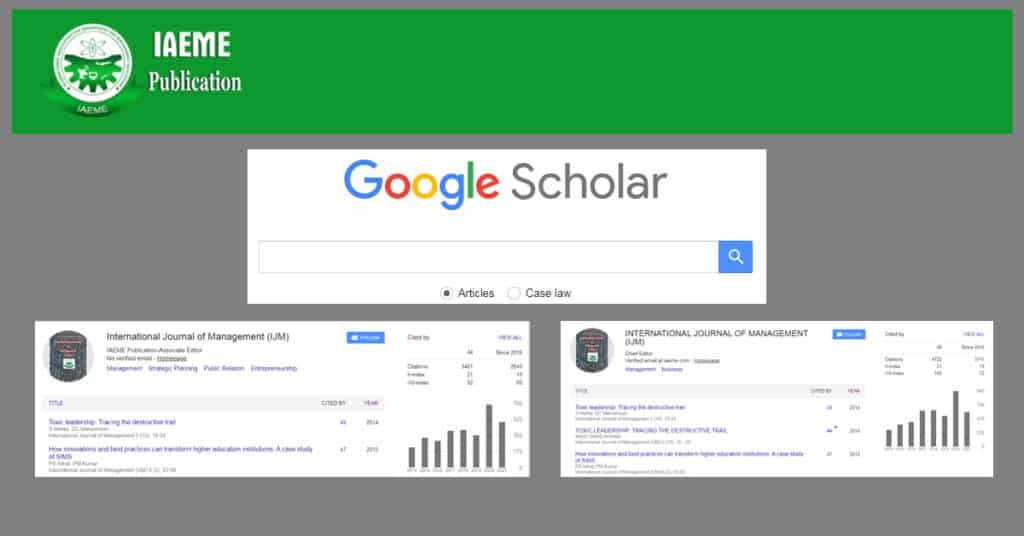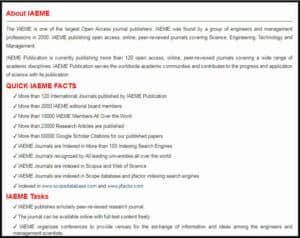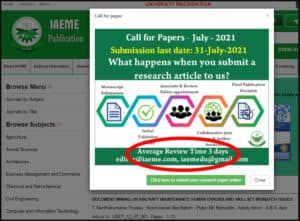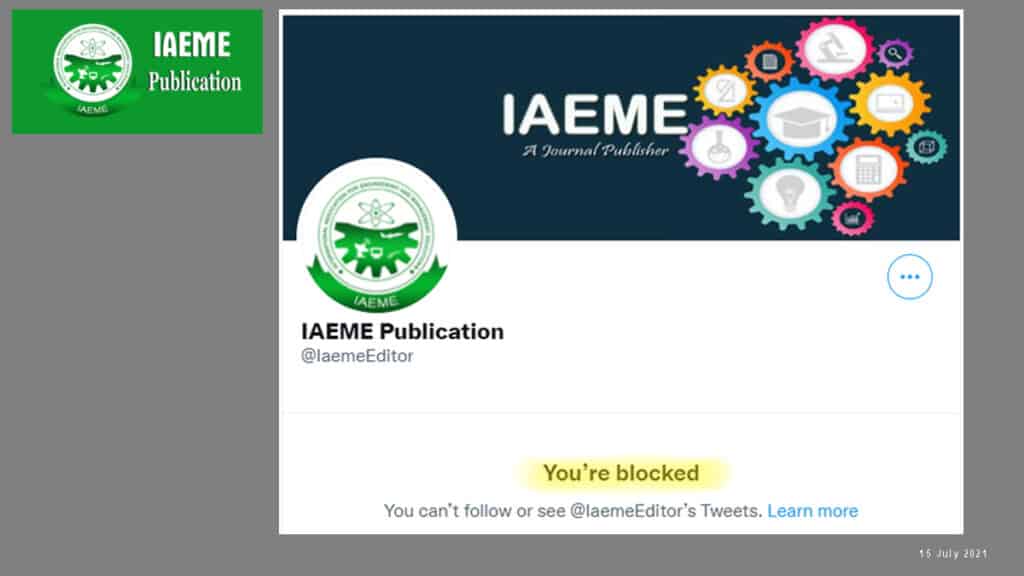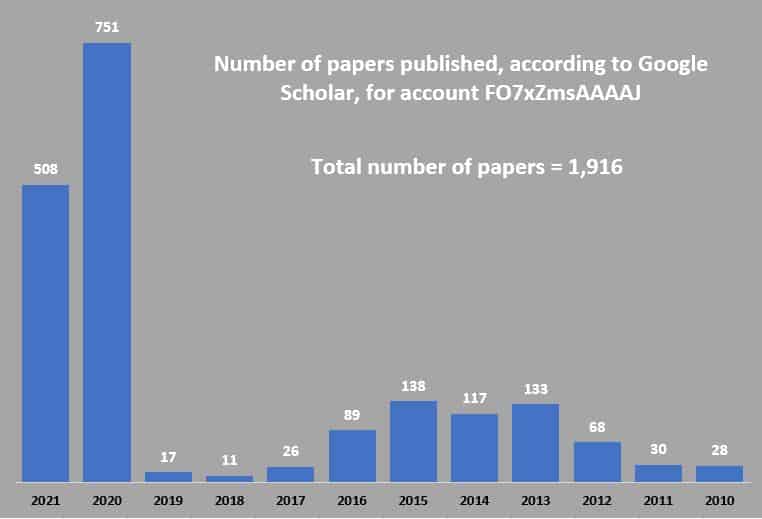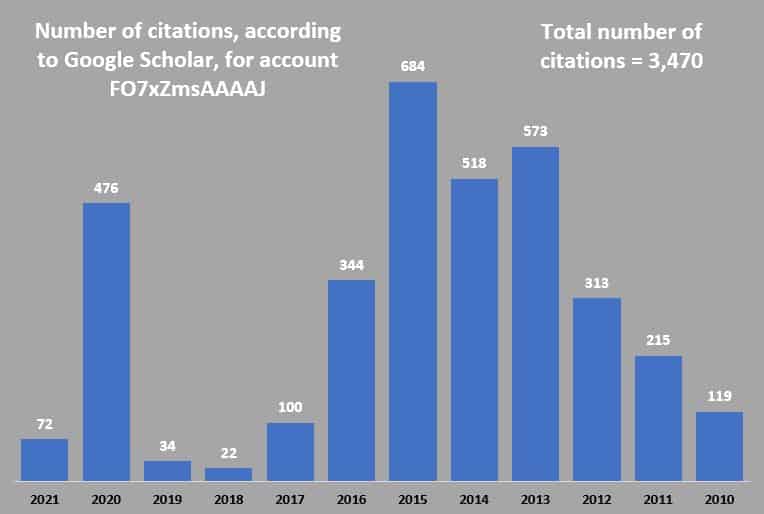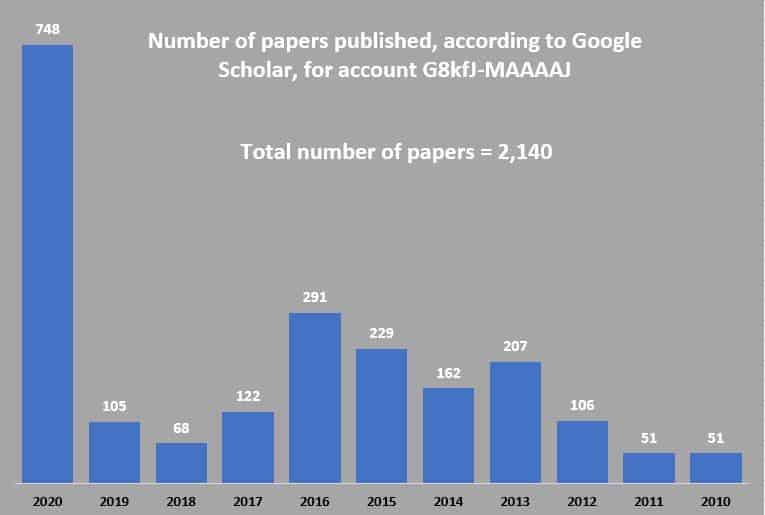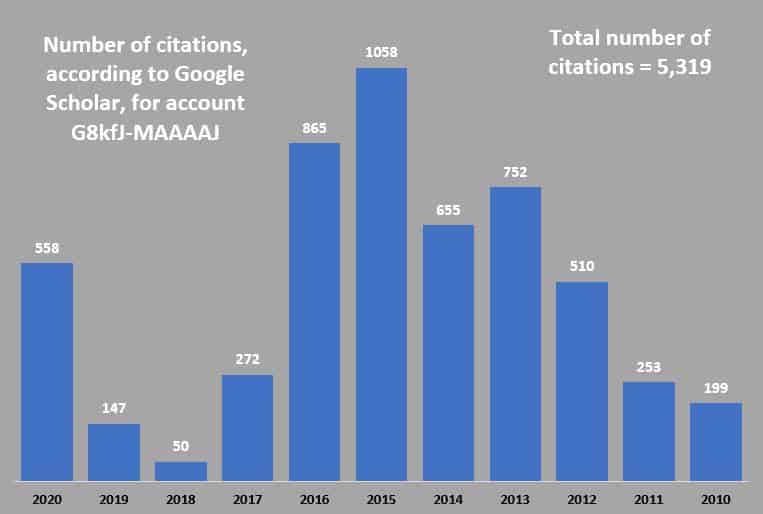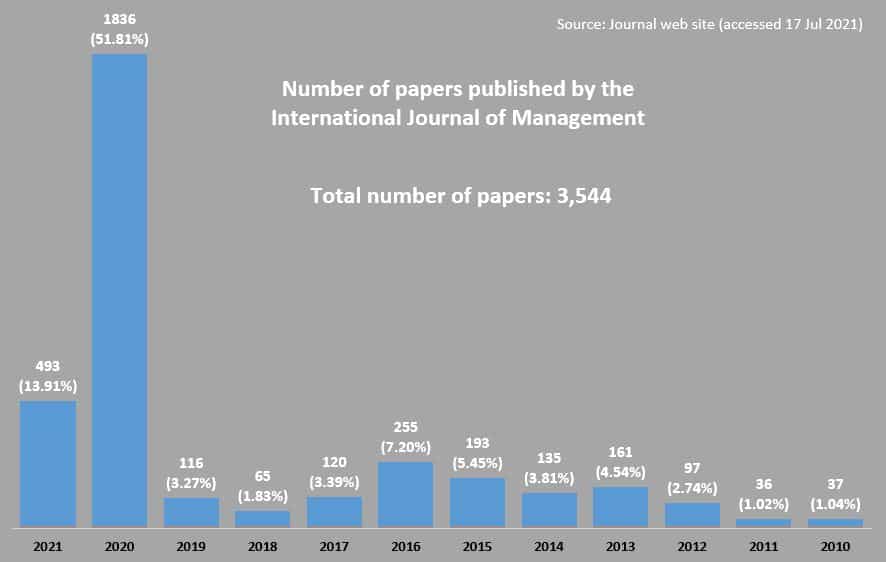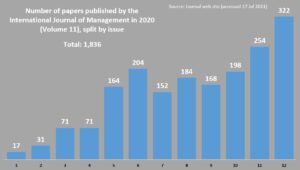The International Journal of Management (ISSN: 0976-6502), which is published by IAEME Publication has two Google Scholar entries. Each one shows a different number of publications, citations, h-index etc. In this article, we take a closer look as well as comparing against the journal’s own records, from its web site.
About IAEME Publication
IAEME claims to be one of the largest open access publishers, publishing more than 120 journals. It says that its journals are indexed in Scopus, Web of Science, Scope Database and jifactor. See figure 1 for further details (click to see a larger image).
IAEME Publication is based in India. Figure 2 shows a map (click to see a larger image), along with their contact details.
Concerns with IAEME
We admit to having some concerns with IAEME Publication and we are currently carrying out a deeper study, which goes beyond this Google Scholar analysis. Just to give you some idea of our other concerns, we mention three things.
The first is their review times. When we access their web page a pop up appears (see Figure 3). It states that the average review time is 3 days. This seems very short for a scientific journal?
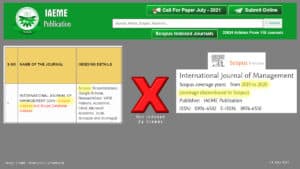
Our second concern is that the publisher claims that some of their journals are indexed by Scopus. One of the journals we checked, and which is the the focus of this article (International Journal of Management), states that it is indexed by Scopus. We recently tweeted that the journal was making this claim, but it is not true, which can be verified by looking at the Scopus web site.
Our third concern is that IAEME Publication has blocked us on Twitter (see Figure 5). We are not really concerned about being blocked (it goes with the territory) but it shows us that they have taken some notice of what we have done (or doing) and the worry is, why are they worried.
We have offered them the right of reply but, at the time of writing, they have not responded to us.
As we mentioned above, we have been tweeting about IAEME Publication. We hope that these have been fair, in that we present facts, rather than subjective observations, but feel free to judge that for yourself. Some of our tweets can be seen here.
We are currently carrying out a more in depth investigation of IAEME Publication and will present our findings in a future blog post.
International Journal of Management (IJM)
The focus of this article is the International Journal of Management (IJM), which is published by IAEME Publication. We will specifically look at their Google Scholar records, but there are other concerns about this journal, as we have mentioned on Twitter. For example:
- A query about the calculation of the Google Scholar impact factor (see here)
- Where do the other impact factors they mention come from? (see here)
- The number of citations they are reporting, as opposed to the number given by Google Scholar (see here)
- The fact they mention that they are indexed by Scopus when they are not (see here)
Journal of International Management Google Scholar Records
While looking at IAEME Publication and the Journal of International Management it came to our attention that the journal has two different Google Scholar entries. We reported this in this tweet.
The two entries can be seen here (Google Scholar ID: FO7xZmsAAAAJ) and here (Google Scholar ID: G8kfJ-MAAAAJ).
At the time of writing, one of these profiles (FO7xZmsAAAAJ) had 3,468 citations and an h-index of 21 (see Figure 6) and the other (G8kfJ-MAAAAJ) had 4,737 citations and an h-index of 21 (see Figure 7).
Figures 6 and 7 showing the Google Scholar profile for FO7xZmsAAAAJ and G8kfJ-MAAAAJ, both of which are for the Journal of International Management (accessed 16 Jul 2021)
FO7xZmsAAAAJ
This was the first Google Scholar account we found for the International Journal of Management (see Figure 6). We took a closer look at the publications that were indexed (we did this by downloading the entries into a spreadsheet and analyzed them from there). Figure 8 shows the number of publications indexed by Google Scholar, split by year.
It is interesting to note the significant increase in published papers in the last two years, bearing in mind, at the time of writing, we are only just over half way through 2021.
Figure 9 shows the number of citations, recorded by Google Scholar, for account FO7xZmsAAAAJ. The profile is a little surprising. You would expect to see citations increase year-on-year, as more papers are published that can be cited from. We have not done a detailed analysis of this but we wonder why the journal only attracted 22 (resp. 34) citations in 2018 (resp. 2019).
If we take the number of papers as 1,916 and the number of citations as 3,470, this would give an impact factor of (3470/1916)=1.81. This is higher than the 1.2 impact factor that the journal was reporting, or even the 0.98 that we previously calculated.
G8kfJ-MAAAAJ
This was the second Google Scholar account we found for the International Journal of Management (see Figure 7). We took a closer look at the publications that were indexed (again, by downloading the entries and analyzing using a spreadsheet). Figure 10 shows the number of publications indexed by Google Scholar, split by year.
We should note that we deleted 836 records from the papers listed in Google Scholar as they were duplicates (identified by the title). These are typically indicated on Google Scholar by the use of an asterix.
It is interesting to note that this account indexes more papers (2,140 vs 1,916), yet it does not (yet) index 2021 papers. It is reasonable to suppose that this would be around 500, taking the total to around 2,600
Figure 11 shows the number of citations that the journal has attracted, as indexed by account G8kfJ-MAAAAJ. Similar to the other account, there is a dip in 2018 and 2019, but it is picking up in 2020.
If we take the number of papers as 2,140 and the number of citations as 5,319, this would give an impact factor of (5319/2140)=2.53. This is higher than the 1.2 impact factor that the journal was reporting, or even the 0.98 that we previously calculated.
Comparison with the journal's data
It is useful to also compare the Google Scholar data with the data as recorded by the journal, on their own web site.
We extracted the number of papers they had published each year and present this analysis in Figure 12.
We make the following observations on the data presented in Figure 12:
- The number of published papers increased significantly in 2020. This year represents more than 50% of the papers they have published since the journal started in 2010.
- What made 2020 such a high year was the large number of papers the journal published in issues 11 and 12, although there appeared to be a significant rise since issue 5. Figure 13, shows the breakdown, by issue, for 2020 (click image to enlarge it).
- 2021 is already ahead of all the other years, with the exception of 2020. So far, volume 12 (i.e. 2021) has published 493 papers (see Figure 14). This is up to issue 7. Assuming they publish 12 issues, this could mean that they will publish about 850 papers this year. It is noticeable that the number of papers published in 2021 is decreasing, recognizing that issue 7 may not yet be complete.
Final Remarks
The purpose of this article was to raise the issue that a journal had two different Google Scholar accounts, which report different data. Moreover, neither Google Scholar account aligns with the data on the journal’s own web site. In our view, it would be useful if the journal editors consolidated their two Google Scholar accounts and also aligned that (single) account with the data held on the journal’s web site. If the editors could do this, it might actually benefit them as both Google Scholar accounts appear to under report what is shown on the journal’s web site.
Aside from the Google Scholar concerns, our recent tweets have asked other questions. As an example, some of the publisher’s journals were indexed by Scopus but this indexing was discontinued in 2020, apart from one journal as far as we could tell. We also asked, via Twitter, about areas such as impact factor calculations and, indeed, what impact factors are being used.
The journal has blocked us on Twitter. Rather than doing that, we would much rather enter into a dialogue and we have made the offer for them to write a blog post, to enable them to present their views. We hope that they take up this offer.
